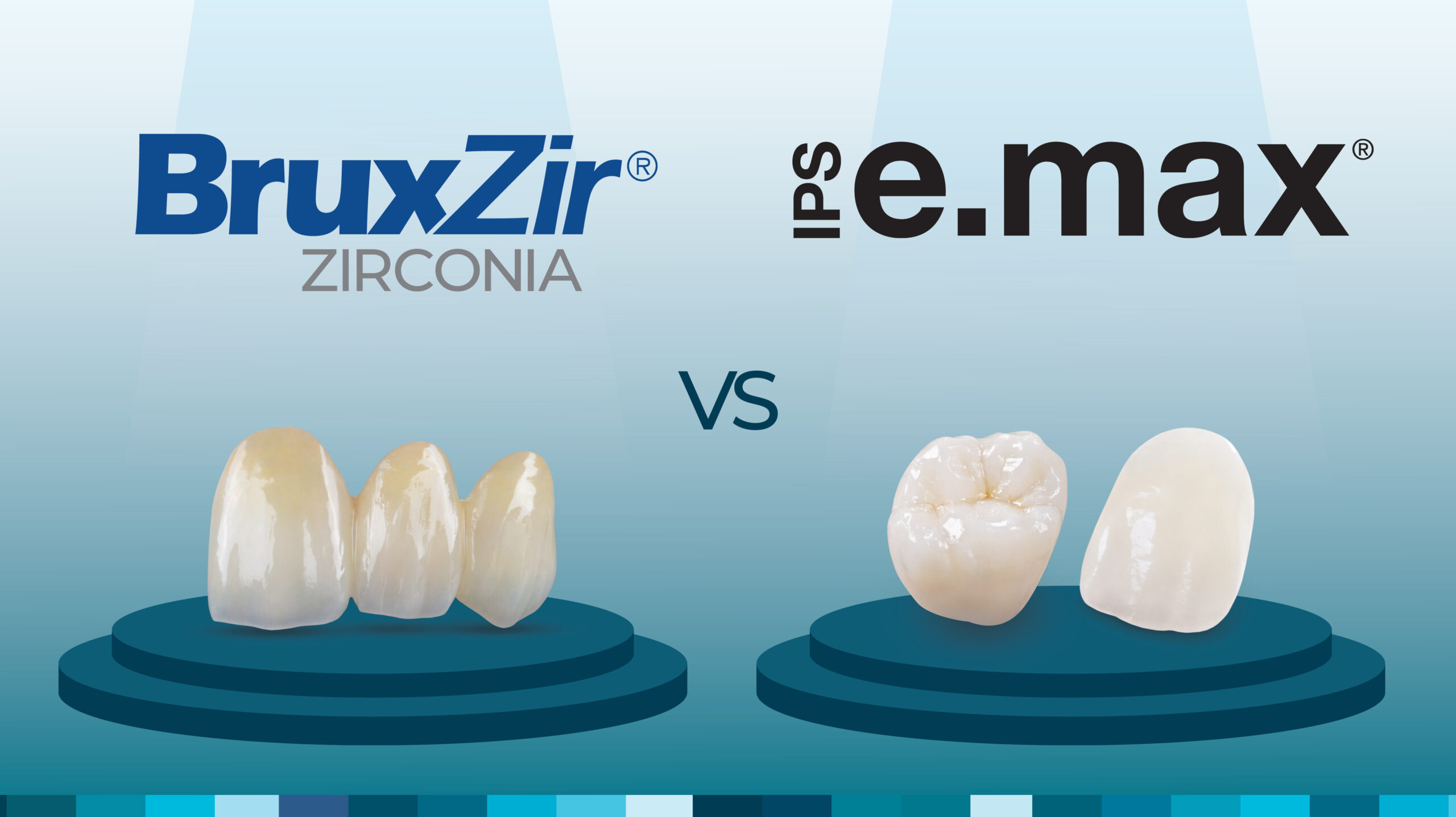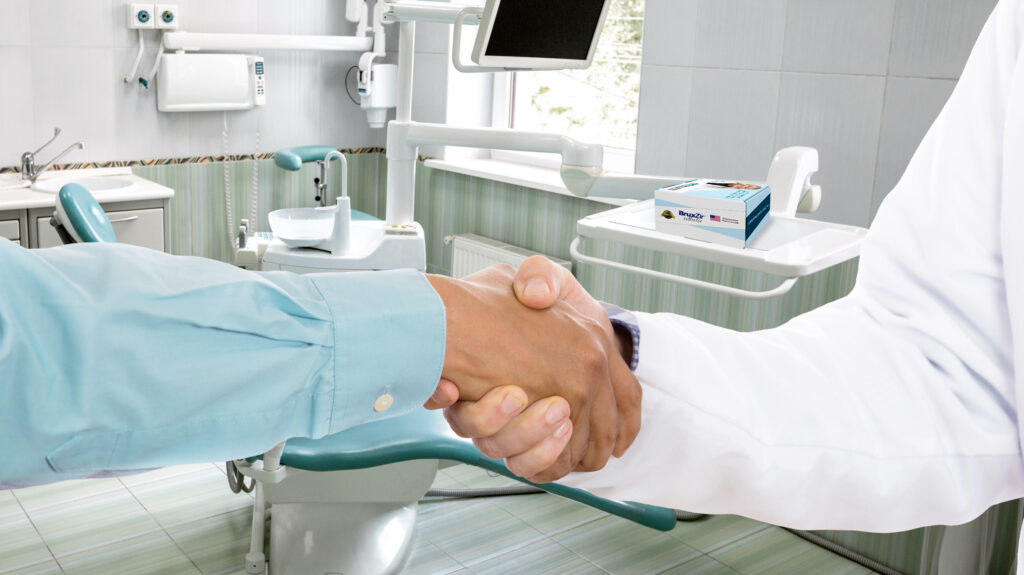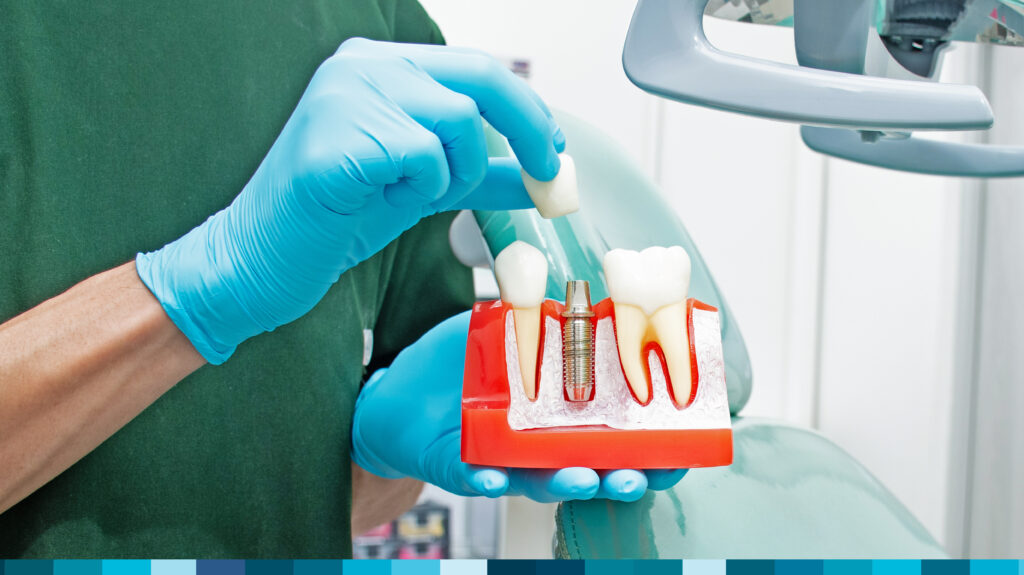As with all clinical decisions, material selection is a matter of indication – each case is different. That’s why New West wants to make things easier by providing you with all the information you need to decide when to use zirconia and when to use IPS e.max.
BruxZir Zirconia
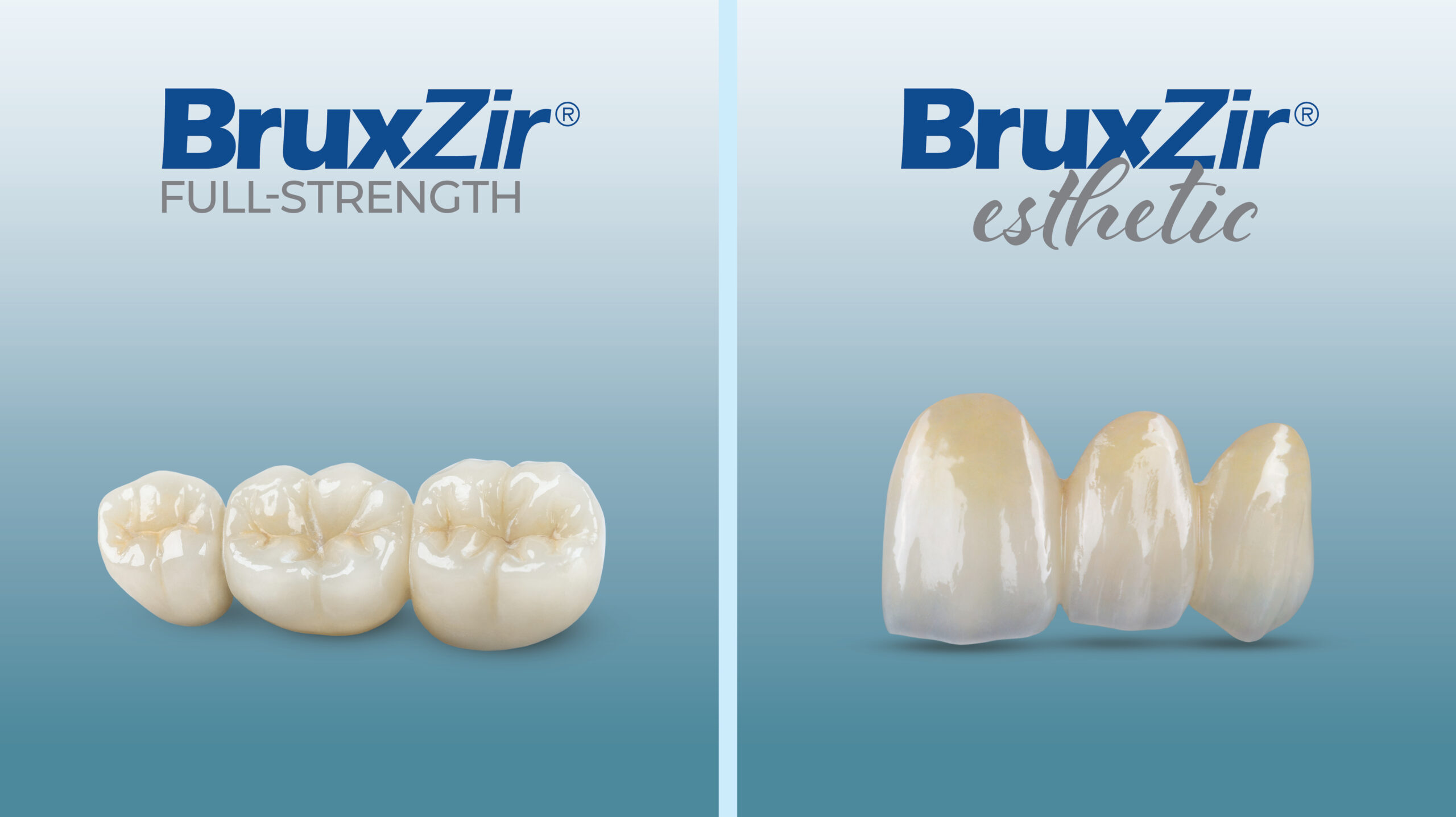
As the name suggests, the main feature of BruxZir Full-Strength is its strength. This zirconia material demonstrates high survival rates against the toughest clinical forces.
- > 1,000 MPa flexural strength
- Uncompromising strength to withstand opposing forces in the posterior
- 0.5 mm minimum reduction (1.0 mm ideal reduction)
- Anterior and posterior bridges (up to 16 units)
BruxZir Esthetic is a durable zirconia material as well, but its main feature is its incredible esthetic appearance. For cases in the smile zone, BruxZir Esthetic is the ideal choice.
- ≥ 870 MPa flexural strength
- High translucency and lifelike vitality designed for the anterior
- 0.7 mm minimum reduction (1.25 mm ideal reduction)
- Anterior bridges (up to 6 units) and posterior bridges (up to 4 units)
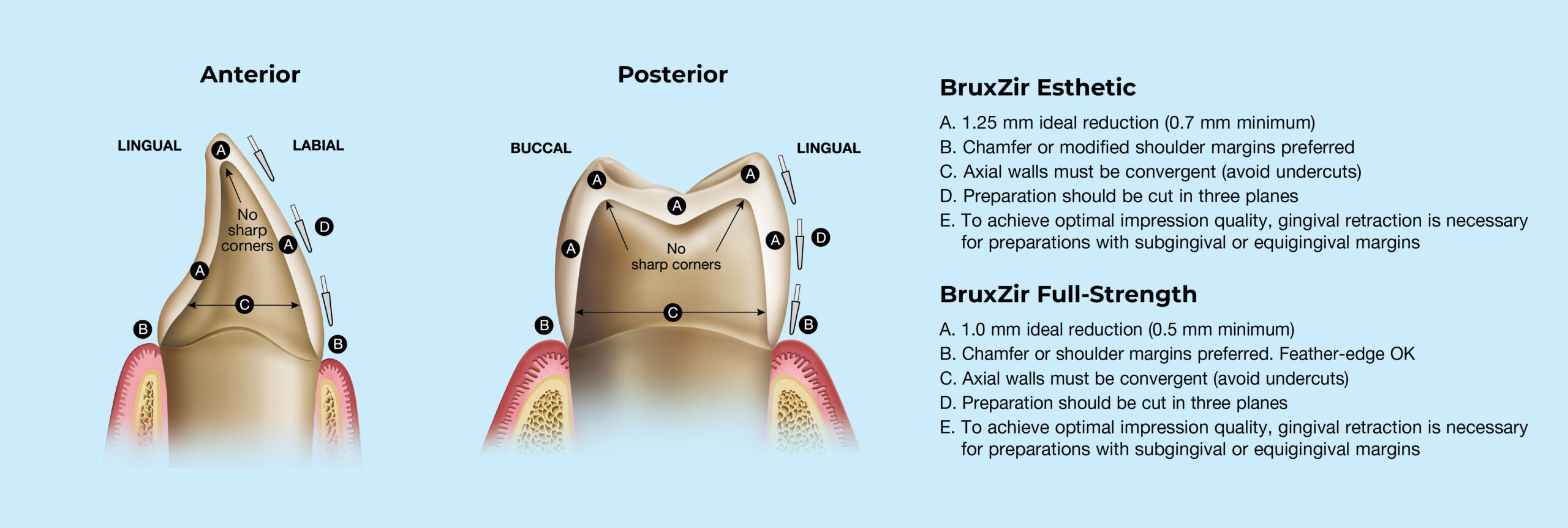
The versatility of these two monolithic zirconia materials allows clinicians to prescribe BruxZir for a wide variety of indications, including crowns, bridges, veneers, screw-retained crowns and full-arch implant prostheses.
IPS e.max
IPS e.max is made from a glass-ceramic material called lithium disilicate, which offers excellent esthetics and is considered the world’s best-selling glass-ceramic dental material.1
- Affordable alternative to zirconia-based restorative materials
- 500 MPa flexural strength
- 1.0 mm minimum reduction (1.5 mm ideal reduction is recommended for the incisal or occlusal third)
- Anterior bridges (up to 3 units)
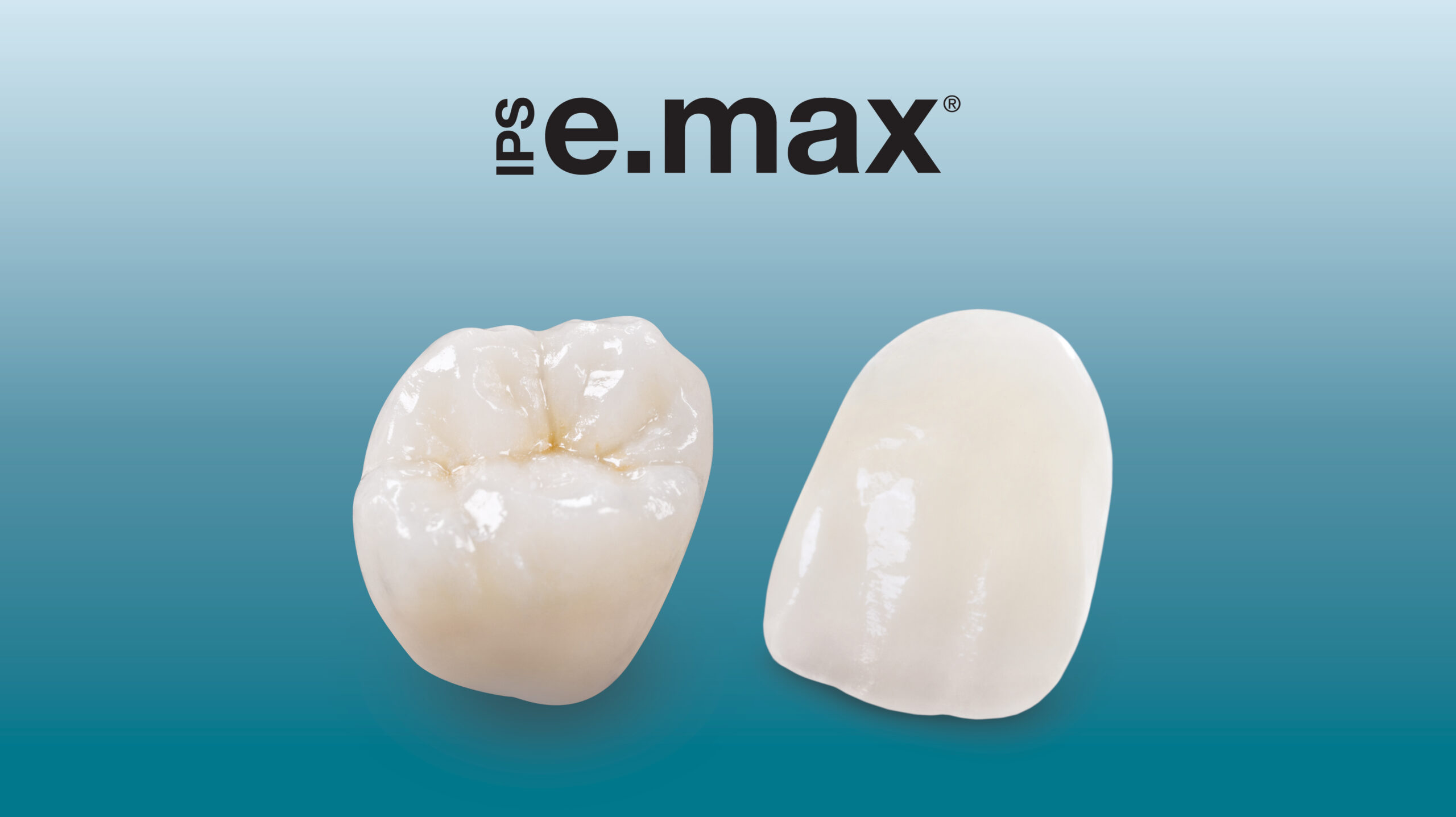
Which is Preferred?
No matter what material you choose for your next restoration, BruxZir Zirconia and IPS e.max are excellent choices.
Reference
- Ivoclar Vivadent sales figures. Available from: www.ivoclarvivadent.com/en_US/Products/Digital-Processes/IPS-e.max-CAD

